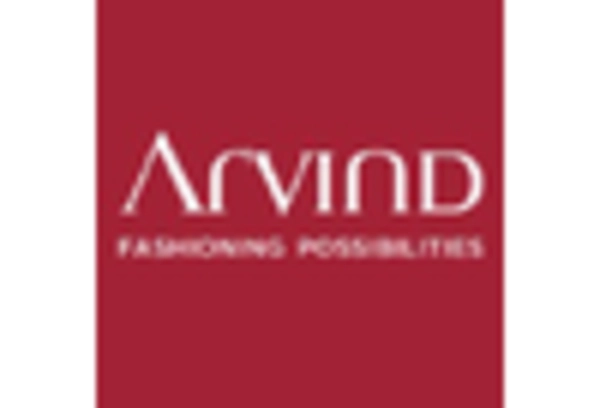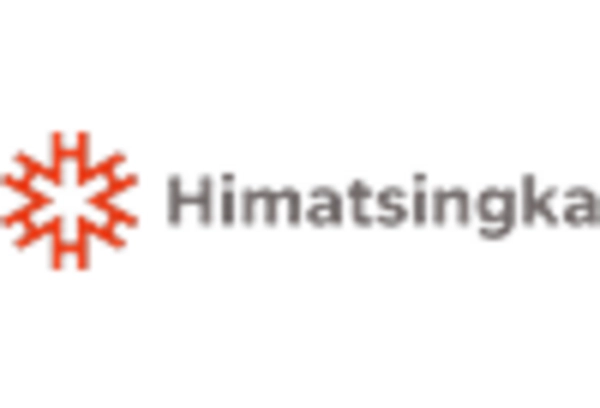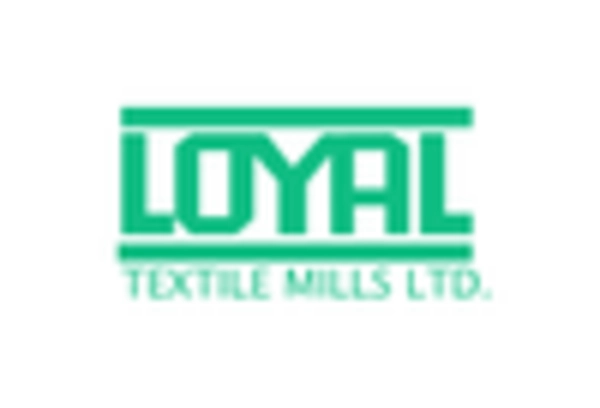China : Unmatched Production and Demand Growth
China holds a commanding 12.5% market share in the APAC cotton yarn sector, driven by robust industrial capabilities and a vast consumer base. Key growth drivers include increasing domestic demand for textiles, government support for the textile industry, and advancements in manufacturing technologies. Regulatory policies favoring sustainable practices and investments in infrastructure have further bolstered market growth. The country’s extensive logistics network enhances distribution efficiency, making it a global hub for cotton yarn production.
India : Strong Domestic Demand and Exports
India commands an 8.0% share of the APAC cotton yarn market, fueled by a growing textile industry and increasing export opportunities. The demand for cotton yarn is driven by rising consumer preferences for sustainable and organic textiles. Government initiatives like the Production-Linked Incentive (PLI) scheme are enhancing competitiveness. Additionally, investments in modernizing spinning mills and improving supply chain logistics are pivotal for growth.
Japan : Focus on Innovation and Sustainability
Japan's cotton yarn market holds a 2.5% share, characterized by a focus on high-quality and innovative textile products. The demand is driven by consumer trends favoring sustainable and eco-friendly materials. Regulatory frameworks promote environmental sustainability, encouraging manufacturers to adopt green practices. The market is also supported by advanced technology in textile production, ensuring high standards and efficiency.
South Korea : Quality Meets Innovation in Textiles
South Korea captures a 2.0% share of the cotton yarn market, driven by technological advancements and a strong emphasis on quality. The demand for cotton yarn is influenced by the growing fashion industry and consumer preferences for premium textiles. Government policies support innovation in textile manufacturing, while investments in R&D enhance product offerings. The market is characterized by a competitive landscape with several local players focusing on niche segments.
Malaysia : Strategic Location for Textile Trade
Malaysia holds a 1.5% share in the cotton yarn market, benefiting from its strategic location for trade within APAC. The growth is driven by increasing local demand and export opportunities, particularly to neighboring countries. Government initiatives aimed at boosting the textile sector, along with investments in infrastructure, are key growth drivers. The market is characterized by a mix of local and international players, enhancing competition.
Thailand : Diverse Applications in Cotton Yarn
Thailand's cotton yarn market accounts for 1.8%, driven by a blend of traditional craftsmanship and modern manufacturing techniques. The demand is influenced by the local textile industry, which focuses on both domestic consumption and exports. Government support for the textile sector, along with initiatives promoting sustainable practices, are pivotal. Key cities like Bangkok and Chiang Mai are central to the market, hosting several major players.
Indonesia : Expanding Textile Industry Landscape
Indonesia's cotton yarn market, with a 0.9% share, is on the rise, driven by a growing domestic textile industry and increasing consumer demand. Government initiatives aimed at enhancing the textile sector's competitiveness are crucial for growth. The market is characterized by a developing infrastructure and a focus on sustainable practices. Key cities like Jakarta and Bandung are emerging as important hubs for cotton yarn production.
Rest of APAC : Varied Growth Across Sub-Regions
The Rest of APAC holds a 0.83% share in the cotton yarn market, with diverse conditions across different countries. Growth is influenced by local demand, regulatory environments, and varying levels of industrial development. Countries in this category face unique challenges, including competition from larger markets and infrastructure limitations. However, opportunities exist in niche markets and sustainable textile production, driven by changing consumer preferences.


















Leave a Comment